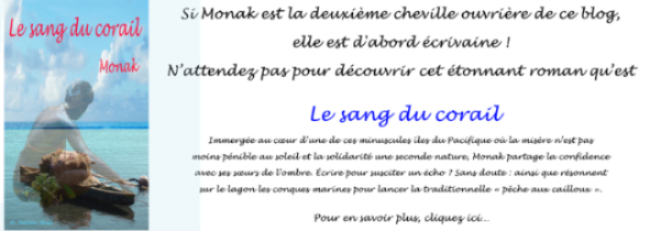
First Polynesian arts festival
In June and July in Tahiti, amateurs and professionals
offer, every day, dazzling performances, all dedicated to traditional
Polynesian arts.
Since 133 years, every year
over two months, Polynesia vibrates to the sound of to’ere*, making the event
one of the oldest festivals of the world.
 |
| You’ve sung… now it’s time to dance! |
Music,
songs and dances of course, but also traditional sports such as javelin throw,
fruit carriers' race or stone lifting are
featured in Tahiti and the islands
of French Polynesia. But the climax of the
event, the ultimate dream of every French Polynesian group is the official
competition which takes place in Papeete, in July.
Tiurai or
Heiva, what is it?
Initially Tiurai (meaning July, in reo Tahiti) or
today Heiva (feast) are the two names
borne successively by the most important and oldest festival and cultural event
of Polynesia.
The story begins with
evangelism and its prohibitions, materialized in 1819 by King Pomare II’s Code:
it forbids and heavily penalizes (among other things) “songs, games or
lascivious entertainments”… All these interdictions have been dictated to Pomare
by the emissaries of the London Missionary Society. Because of this, many
things have been definitely lost in Polynesian traditional arts.
 |
| The 130th edition of the Heiva I Tahiti |
From 1880, it’s the official
celebration of the French national day which allows curiously the return of
traditional events in Tahiti. The event is called Tiurai until 1985 when it was renamed Heiva I Tahiti.
Since the first edition in
1880, there would have been two years without Heiva. And, although this
statement is subject to controversy, the 2012 edition is officially the 130th
of its kind.
Dances, songs,
music and so on
If the highlight of each edition of the Heiva i Tahiti is the
contest of the best song and dance group, what represents seven nights in July.
But it’s a multitude of events of all kinds which are proposed on this
occasion, for two months in Tahiti and its islands.
 |
| Spectacular event of stone lifting for the Heiva |
In Tahiti, the festivities
take place in the month of June and July. Besides the contest already cited and
which is closing the events, the Heiva of the schools, then the competitions of
traditional sports and crafts, and finally the show of amateur groups, will
succeed.
Sports and
traditional Polynesian craft
Firstly, the impressive
racing of va’a* (outrigger canoe), happening in the harbor of Papeete; it leads
to showy tussles and offers the unique opportunity to see the stunning double
canoes where evolve sixteen rowers. It’s also one of the rare occasions to
contemplate the few traditional veil canoes racing still existing in French
Polynesia.
 |
| These sailing canoes have, alas, almost gone… |
The javelin (teka) throw is
to drill with a purau* stick, javelin from 2 or 4 meters long, a coconut atop a
mast of 9.50 meters and 20 away meters for the shooters.
 |
| The target of the Polynesian javelin |
Fruit carriers’ race
consists for athletes to wear running between 30 and 50 kilos of fruits over a
distance of two kilometers. In these tests, so be the fastest is important, the
costume of the rider and his skill, are at least as much as the final result.
Finally, the most exceptional
event: the stone lifting (amoroa’a ofai). It’s in maximum three attempts to
hang up on his shoulder and standing erect, a stone on the ground and weighing
80 to 100kg. The fastest is the winner. In the past, for simplicity, the stone
was monoï coated!
The copra contest
during the Heiva 2011
Very spectacular copra
competitions and fire walking (or umu ti) are also organized.
Polynesian
songs and dances at the Heiva
The singing competitions
have four distinct categories:
-The Himene tarava
(traditional songs) is interpreted by the whole group and directed by a
ra’atira (choirmaster).
 |
| Himene tarava a unique moment of Heiva |
-The Himene nota (most
recent religious songs). These are the only songs written on partitions. It is
sung by four voices without instrumental accompaniment.
-The Himene ru’au (very old
songs) is interpreted unaccompanied by three of five voices
-The ute is a rhythmic song,
sung by two or three singers accompanied by a small ensemble of string
instruments (guitar, ukulele). The lyrics are completely improvised and bases
on puns.
 |
| Magical power of polynesian dancers |
But the highlight of course,
remains the Heiva dance competitions. Each group (which may have more than 80
dancers!) displays a performance referring mostly to ancient legends bringing
out the island or district whose it’s originated.
For the awarding of the group
of the year, the jury considers the choreography of course, but also costumes,
orchestration and performances of dancers.
Heiva: an
essential role
Beyond its strictly festive
aspect, the Heiva plays a crucial role in the transmission of knowledge to
younger generations by enabling them to acquire a sense of tradition, a major
concern in contemporary Polynesia.
The Manahau group at
the Heiva 2011
Incidentally, the Heiva is
also one of the leading cultural events of the year, and this attracts a
significant proportion of tourists visiting our islands.
sources:
"Tahiti in ancient time" Henry Teuira
Glossary:
* to'ere: The to'ere is a percussion carved into a tree trunk and whose
sound depends on the size. It is beaten with two sticks and this instrument is
the basis of all Polynesian music.
* va'a: Polynesian outrigger canoes can count one, three, six and up to
twelve rowers.
An article
of Julien Gué
Translated from French by Monak
Copyright
Julien Gué. Ask for the author’s agreement before any reproduction of the
text or the images on Internet or traditional press.






